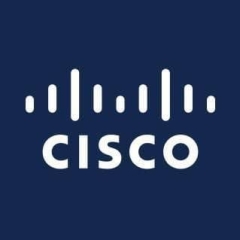How has it helped my organization?
I can't put Cisco on the firewall when the security landscape has changed so much in the past five to ten years. We are doing a lot more in the next generation of firewalls. We had a legacy classic firewall before we went to Firepower, and we spent a lot less time on that firewall, but we are spending more time on the Firepower because we are utilizing a lot of the features that are available in Firepower that were not available in the previous firewall that we had. I'm not going to say that we're spending less time, but we're gaining more value.
Another benefit has been user integration. We try to integrate our policies so that we can create policies based on active users. We can create policies based on who is accessing a resource instead of just IP addresses and ports.
What is most valuable?
If I were to have been asked a few weeks ago, I would have said threat prevention was the most valuable feature, but the world is changing a lot, so my favorite features a few years ago might not be my favorite features today.
What needs improvement?
The visibility the solution gives when doing deep packet inspection can be complex. I really like the visibility, but it's not always intuitive to use. I also help other customers. We are a contracting company that implements their solutions, and I've found that it's not always easy to get everyone to utilize some of the visibility features. But for me personally, I think they're very valuable.
The ease of use when it comes to managing Cisco Firepower has a lot of room for improvement. When monitoring a large set of firewall policies, the user interface could be lighter. It's sometimes heavy in use, and there could be improvements there. I know they're trying to make improvements.
It's mainly the UI and the management parts that need improvement. The most impactful feature when you're using it is the user interface and the user experience.
For how long have I used the solution?
We were an early adopter when Firepower first came out. I've been using Cisco firewalls for the last two decades.
Buyer's Guide
Cisco Secure Firewall
November 2025
Learn what your peers think about Cisco Secure Firewall. Get advice and tips from experienced pros sharing their opinions. Updated: November 2025.
873,209 professionals have used our research since 2012.
What do I think about the stability of the solution?
For newer hardware models, the stability is good. We've tried to run Firepower on some of the legacy-supported hardware as well, but with the stability issues, they are not as good. If I were to judge based on the hardware that I have, I'd say it's good. I haven't had any issues with the stability on my platform.
What do I think about the scalability of the solution?
We just recently enabled Snort 3 so I'm evaluating the functionality. That's what we've considered, but we haven't done any performance testing. Our company would qualify as a small to medium business company. The average office environment is about 100 to 200 people. Performance-wise, my company is about 120 people.
Scalability is really not relevant. I know there are features that address some of those parts, like clustering and stuff, but that's really not applicable in my use cases.
How are customer service and support?
The support is eight to nine out of ten. You can't blame them for any faults of the prototypes, but the support has been really good and really helpful when we had any issues.
Which solution did I use previously and why did I switch?
I have hands-on experience in both Fortinet and Palo Alto. So if I were to compare this to Palo Alto, for example, I would say that the user interface in Palo Alto is a lot better. But the reason that I'm working with Firepower is that we have a Cisco network as well, and Cisco ISE. We're trying to integrate different Cisco solutions. We're trying to utilize the ecosystem benefits where I can connect my Cisco Firepower to ISE and have it talk to the App Cloud. There's a benefit of utilizing Cisco Firepower in conjunction with our other Cisco solutions.
Ease of management is similar with Cisco and Fortinet, I would say similar, but it's easier in Palo Alto.
How was the initial setup?
I recently deployed a similar solution at a customer's premises, and that setup was straightforward.
The steps are fairly documented and the documentation and guides on Cisco are straightforward. You know what you're expected to configure, and it's easy to get up, running, and started. It takes some more time to check everything and get everything as you want to have it, but getting started and getting connectivity and starting to create policies was easy to do and didn't take a very long time.
It took two to four hours, including some upgrades.
What other advice do I have?
My main advice would be to utilize all the guides and documentation available from Cisco publicly and not trying to implement it using legacy thinking. Don't try to just replace something else you have. If you have a next-gen firewall, you want to try to utilize what you're getting, and getting the most out of a firewall. There are some great guides and documentation on Cisco that explains what you can do and how you can do it.
I would rate it a seven out of ten.
Disclosure: PeerSpot contacted the reviewer to collect the review and to validate authenticity. The reviewer was referred by the vendor, but the review is not subject to editing or approval by the vendor. The reviewer's company has a business relationship with this vendor other than being a customer: Partner













